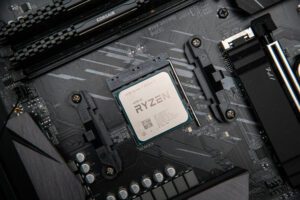A tv typically uses between 80 – 400 watts of energy, depending on the size and type of tv. Televisions are a common source of entertainment in most homes today.
We spend hours streaming our favourite shows, movies, or gaming, which leaves us wondering, how much energy does a tv consume? The power consumption of a tv varies depending on several factors such as screen size, picture quality, and usage.
Understanding the power rating of your tv is essential to manage your energy consumption, reduce your electricity bill and preserve the environment. In this article, we will discuss the average wattage range of tvs and factors affecting power consumption, so you can make informed decisions when purchasing or using a tv.


Credit: www.scmp.com
Understanding Tv Power Consumption
Tv power consumption is a crucial factor to consider when purchasing a television. It is measured in watts, which determines the energy efficiency of the tv. Understanding how it works is important to reduce electricity costs and carbon footprint. Different tv sizes and types require varying amounts of wattage, so it is best to check the manufacturer’s specifications before purchasing.
A larger tv tends to use more power, especially if it is a 4k resolution tv. Other factors that can affect energy consumption include brightness and contrast settings, sound volume, and usage time. By being conscious of tv power consumption, you can choose an energy-efficient tv and help reduce your impact on the environment.
Factors Affecting Tv Energy Consumption
Tvs have come a long way since the days of bulky, power-hungry sets that consumed a lot of electricity. Nowadays, tvs are more energy-efficient because of advancements in technology. However, the size of the tv still plays a significant role in determining how much power it consumes.
As a general rule, larger tvs use more energy than smaller ones. Aside from tv size, the type of tv technology also affects energy consumption. Lcd tvs use less energy than their led and oled counterparts. Moreover, using different picture modes and settings can impact the tv’s power usage.
For example, switching to “eco mode” helps reduce energy consumption. By considering these factors, you can make an informed choice when purchasing a tv to minimize its energy usage and save you money on your electricity bill.
Average Tv Wattage Consumption
Tvs are one of the most common electronic devices found in households today. When considering energy consumption, it’s important to know how many watts your tv uses. The average tv wattage consumption varies depending on the size and type of tv, typically ranging from 20 to 300 watts.
To calculate the energy consumption and costs of your tv, you can use a simple equation: wattage x hours used per day x cost per kwh = cost of electricity used. By understanding your tv’s energy usage, you can make informed decisions about energy efficiency and reducing your carbon footprint.
Tips For Reducing Tv Energy Consumption
Reducing tv energy consumption is not only good for the environment but also saves you money. Here are some practical tips: adjusting the brightness and contrast can significantly reduce tv energy usage. Turning off the tv when not in use, including during commercial breaks, can make a huge difference.
Using energy-saving features like timers and sleep mode is also beneficial. Disable automatic updates and avoid using background apps that consume power. Smaller tvs use less energy, choose one that is appropriately sized for your needs. With these simple steps, you can enjoy your tv while also being mindful of its energy usage.
Frequently Asked Questions For How Many Watts Does A Tv Use
How Many Watts Does A Tv Use On Standby Mode?
A tv on standby mode uses about 1 watt to power its clock and other features.
What Is The Average Wattage Consumption Of A Tv?
The average wattage consumption of a tv ranges between 80 and 400 watts, with lcd and led tvs using less power than plasma and crt tvs.
Is It Better To Turn Off The Tv Or Leave It On Standby?
It is better to turn off the tv completely whenever it is not in use. Leaving it on standby mode still consumes energy, albeit in small amounts.
Can I Save Energy By Adjusting My Tv’S Settings?
Yes, you can. Dimming the brightness and contrast of your tv can lower power consumption. Also, using the “energy-saving” mode can help reduce the tv’s energy consumption.
Will Using A Tv Wall Mount Affect Energy Consumption?
No, it won’t. Using a tv wall mount has no significant effect on energy consumption.
Conclusion
As we conclude our discussion on how many watts a tv uses, it’s evident that this is a crucial consideration for anyone keen on energy efficiency and reducing electricity bills. From our research, we have seen that various tv models have varying watt requirements, with newer, energy-star rated models generally consuming less power.
This information highlights the importance of shopping for tvs with the energy star label and selecting appropriate tv sizes depending on room dimensions. Furthermore, it’s essential to note that using energy-efficient settings, such as dimming, and turning off a tv when not in use, can go a long way towards saving energy and money.
As we move forward, let’s embrace energy-efficient initiatives in all areas, including the use of electronics such as tvs, to ensure sustainable living.



